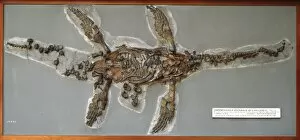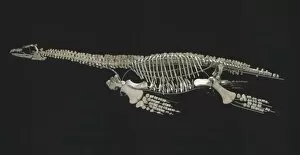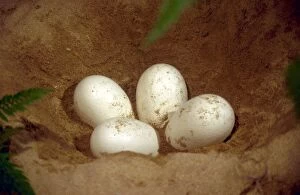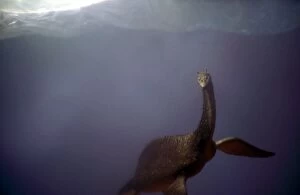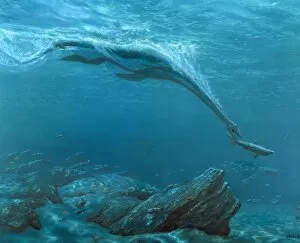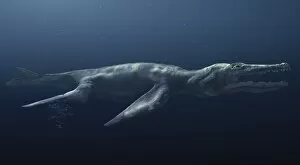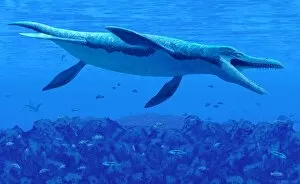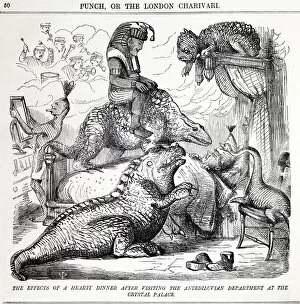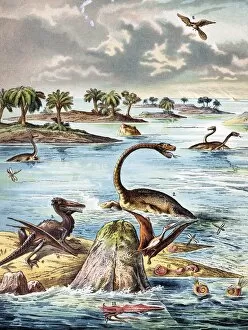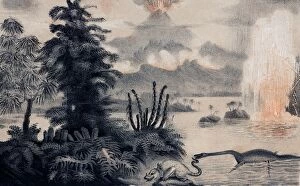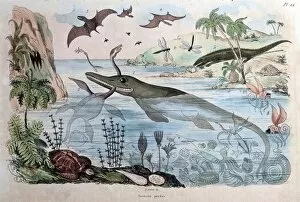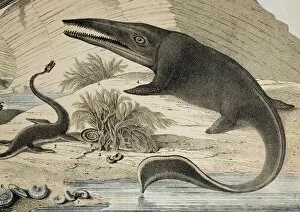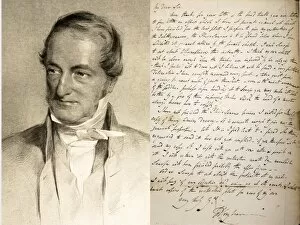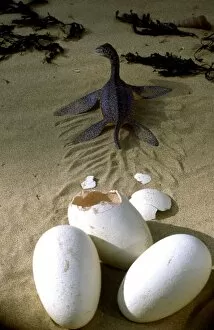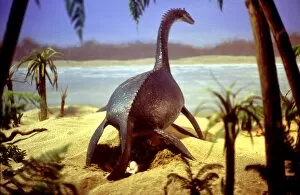Plesiosaur Collection (#3)
"Unveiling the Mysteries of the Plesiosaur: A Journey into Prehistoric Waters" Step back in time to 1862
For sale as Licensed Images
Choose your image, Select your licence and Download the media
"Unveiling the Mysteries of the Plesiosaur: A Journey into Prehistoric Waters" Step back in time to 1862, when British prehistoric marine reptiles known as plesiosaurs captured the imagination of scientists and enthusiasts alike. These magnificent creatures, often associated with the legendary Loch Ness Monster, have left an indelible mark on our understanding of Earth's ancient past. One notable figure in this exploration was Waterhouse Hawkins, whose remarkable model dinosaurs from 1866 included a striking depiction of a plesiosaur. His attention to detail allowed people to visualize these enigmatic beings that once roamed our oceans. The fascination with plesiosaurs extended beyond mere models and artwork. In 1849, Reynolds' "The Antidiluvian World" featured captivating descriptions and illustrations that brought these creatures to life on paper. One such illustration depicted a thrilling battle between a Plesiosaurus and Temnodontosaurus (Oligostinus), showcasing their power and resilience. As scientific knowledge advanced, so did our understanding of specific species within the plesiosaur family. The discovery of Liopleurodon vertebra shed light on another formidable member of this group – its colossal size making it an apex predator during the Jurassic era. Fast forward to more recent times; artists continue to depict these majestic creatures in various forms. From intricate sketches capturing their graceful movements underwater to vibrant color lithographs showcasing their existence during different geological periods – each artwork serves as a testament to humanity's enduring curiosity about these ancient giants. And then there is Loch Ness – forever linked with tales of its elusive inhabitant dubbed the Loch Ness Monster. While debate rages on regarding its existence, some theories suggest that sightings may be attributed to surviving populations or descendants of plesiosaurs lurking beneath those mysterious waters. Intriguing yet shrouded in mystery, the story behind plesiosaurs continues to captivate our imagination.



